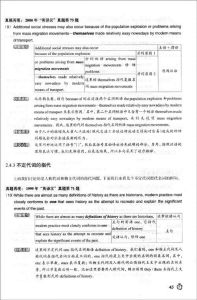簡介
 同位語從句
同位語從句同位語從句是名詞性從句(主語從句、表語從句、賓語從句、同位語從句)中的主要從句之一,從句作同位語表示與之同位的名詞(短語)的實際內容,它的作用相當於名詞,對前面的名詞(短語)加以補充說明或進一步解釋,相當於一個表語從句,它們之間的關係是同位關係,即主表關係。
用法
一個名詞(或其它形式)對另一個名詞或代詞進行修飾,限定或說明,這個名詞(或其它形式)就是同位語。同位語與被它限定的詞的格要一致,並常常緊挨在一起。
名詞作同位語
Mr Wang,my child’s teacher,will be visiting us on Tuesday.
王先生,我孩子的老師,星期二要來看我們。
短語作同位語
I,the oldest girl in the family,always had to care for the other children.
我,作為家裡最大的女孩,老得照料家中的其他孩子。
直接引語作同位語
But now the question comes to their minds.“Did she die young because she was a clone?”
但是現在他們不得不思考這樣的問題:“多莉早死是因為它是一隻克隆羊嗎?”
句子作同位語
The girls were surprised at the fact that ocean ships can sail up the Great lakes.
巨大的海輪可以開到五大湖,讓表姐妹倆感到吃驚。
同位語從句
同位語部分是個句子,就是同位語從句,這種用法比較“固定”。
 同位語從句
同位語從句一、在複合句中用作同位語的從句叫同位語從句。它一般跟在某些名詞後面,用以說明該名詞表示的具體內容。
I heard the news that our team had won.我聽到了我們隊獲勝的訊息。
二、可以跟同位語從句的名詞通常有news,idea,fact,promise,question,doubt,thought,hope,message,suggestion,words(訊息),possibility等。
I’ve come from Mr wang with a message that he won’t be able to see you this afternoon. 我從王先生那裡來,他讓我告訴你他今天下午不能來看你了。
三、英語中引導同位語從句的詞通有連詞that,whether,連線副詞how,when,where等。(註:if、which 不能引導同位語從句。)
He must answer the question whether he agrees to it or not.
他必須回答他是否同意這樣一個問題。
四、有時同位語從句可以不緊跟在說明的名詞後面,而被別的詞隔開。
The thought came to him that maybe the enemy had fled the city.
他突然想起可能敵人已經逃出城了。
引導詞
同位語從句的引導詞,引導同位語從句的詞語通常有連詞that,whether,連線代詞和連線副詞等。
 同位語從句
同位語從句The idea that you can do this work well without thinking is quite wrong.
你認為不動腦筋就能做好這件工作的想法是完全錯誤的。(作idea的同位語)
【注意1】在某些名詞(如demand,wish,suggestion,resolution等)後面的同位語從句要用虛擬語氣
There was a suggestion that Brown should be dropped from the team.
有一項建議是布朗應該離隊。
【注意2】引導同位語從句的連詞that通常不省略,但在非正式文體中也可以省去。
He gabbed his suitcase and gave the impression he was boarding the Tokyo plane.
他拿起了手提箱,給人的印象是他要登上飛往東京的飛機了。
連詞whether引導同位語從句The question whether we should call in a specialist was answered by the family doctor.
我們是否請專家由家庭醫生來定。
【注意】whether 可引導同位語從句,但if不能引導同位語從句。
連線代詞what, who, whom, whose, which1).I have no idea what size shoes she wears.我不知道她穿幾號的鞋。(what作定語)
2).I have no idea which wine is best—it’s a matter of personal taste.我不知道哪種酒最好,這是個人口味的問題。(which作定語)
3).The question who will take his place is still not clear(who作主語)
連線副詞when, where, how, whyWe haven’t yet settled the question where we are going to spend our summer vacation.到哪兒去度暑假,這個問題我們還沒有決定。
語法區別
與定語從句的的語法區別:意義的不同同位語從句是用於說明所修飾名詞的具體內容的,它與被修飾詞語通常可以劃等號;而定語從句是限制所修飾名詞的,它的作用是將所修飾的名詞與其他類似的東西區別開來:
We are glad at the news that he will come.聽到他要來這個訊息我們很高興。(news的內容就是that he will come,故that引導的是同位語從句)
We are glad at the news that he told us.聽到他告訴我們的這個訊息我們很高興。(that從句是限制the news的內容的,即我們高興只是因為他告訴的這個news而不是其他的news,故that從句為定語從句)
引導詞的不同what,how,if,whatever 等可引導名詞性從句,但不引導定語從句。
引導詞的功能上的不同that引導同位語從句時,它不充當句子成分,而引導定語從句時,它作為關係代詞,要么充當定語從句的主語,要么充當定語從句的賓語。如上例 that he told us中的that就充當told的賓語。
被修飾詞語的區別同位語從句所修飾的名詞比較有限,通常有hope,wish,idea,news,fact,promise,opinion,suggestion,truth等,而定語從句所修飾的名詞則非常廣泛。 另外,when和where引導定語從句時,通常只修飾表示時間和地點的名詞,而它們引導同位語從句時卻不一定;又如why引導定語從句,它通常只修飾名詞the reason,而它引導同位語從句時則不一定:
I have no idea when they will come 我不知道他們什麼時候來。(同位語從句)
I’ll never forget the days when I lived there.我永遠不會忘記我住在那兒的日子。(定語從句)
特殊形式
1.間隔同位語從句同位語從句通常是跟在它解釋或說明的名詞後,但有些情況下,由於句子結構的原因,同位語從句不緊跟在名詞後,而被其他的詞隔開。
A warm thought suddenly came to me that I might use the pocket money to buy some flowers for my mother's birthday.
簡析:由於that從句太長,為避免句子失去平衡,此處用了間隔同位語從句。
2.suggestion、request和orderShe made a request that the doctor(should)be sent for at once.她請求立即請醫生來。
簡析:suggestion,order,request,proposal,requirement,command,advice,proposition和recommendation等名詞後接同位語從句時,從句中的謂語動詞要用“(should+)動詞原形”的形式,其中should一詞可省略。
3.短語及固定句式後的同位語從句I will come on condition that John is invited.如果約翰也被邀請的話,我就來。
簡析:短語On condition,on supposition,on the ground(s),on the understanding,with the exception,in spite of the fact,on the assumption及句式There BE+no doubt(hope,chance,possibility......)後的that從句為同位語從句。
雅思例句
1、I have a dream that one day,all roads will be made plain.
2、We hold this truth to be self-evident that all men are created equal.
3、Some people hold the opinion that the Internet is a curse.
4、Museums play a role of education for the simple reason that they provide people with a good opportunityto have a deeper understanding of their own country's tradition and cultures.
相關語法
同位語從句的位置1.一般情況下同位語從句跟在某些名詞(如news,idea,fact,promise,hope,message等)的後面,用以說明該名詞所表達的具體內容。
I’vecomefromMrWangwithamessagethathecan'tvisityouthisafternoon.我從王先生那邊得知一個訊息,他說他今天下午可能不能來看你了。
2.有時同位語從句可以不緊跟在它所說明的名詞後,而被別的詞語隔開,在語法上叫做分隔式同位語從句。同位語從句Thethoughtcametoherthatmaybeshehadleftthedooropenwhenshelefthome.她突然想起可能在她離開家時沒把門關上。
從句前名詞的形式
同位語從句前的名詞通常用單數形式,並且往往帶有限定詞(word除外)加以修飾。
WheredidyougettheideathatIcouldnotcome?你在哪兒聽說我不能來?
同位語從句的語氣
在suggestion,advice,request,order等意為“建議;命令;要求”的名詞後,同位語從句中的謂語動詞通常用“should+動詞原形”的虛擬語氣結構,句中的should可以省略。
Ourteachergaveussomeadvicehowwe(should)usethecomputer.老師給我們提出了一些如何使用電腦的建議。
同位語從句的先行詞通常是抽象名詞,常見的有:idea,situation,thought,fact,evidence,belief,doubt,fear,hope,question,theory,news,order,ability等等。
HowdidthecheatsexplainthefactthattheEmperordidn'tfeelthenewclothesinhim?皇帝覺得身上並沒有穿上新衣,對這個問題騙子是怎樣解釋的?
代詞it可用作同位語從句的先行詞。這個it常放在某些動詞或短語動詞後作賓語,同時兼作其後that同位語從句的先行詞。
IoweittoyouthatIamstillalive.幸虧你,我此刻還活著。
有的語法學家把先行詞it後的that從句看作是動詞或介詞的真正賓語。一般認為,這種it後的that從句應看作it的同位語,因為它相當於“主語+be+表語”結構。
Youmustseetoitthatthechildrendon'tcatchcold(=Youmustseetoit,andItisthatthechildrendon'tcatchcold.)你要當心,別讓孩子們著涼了。

